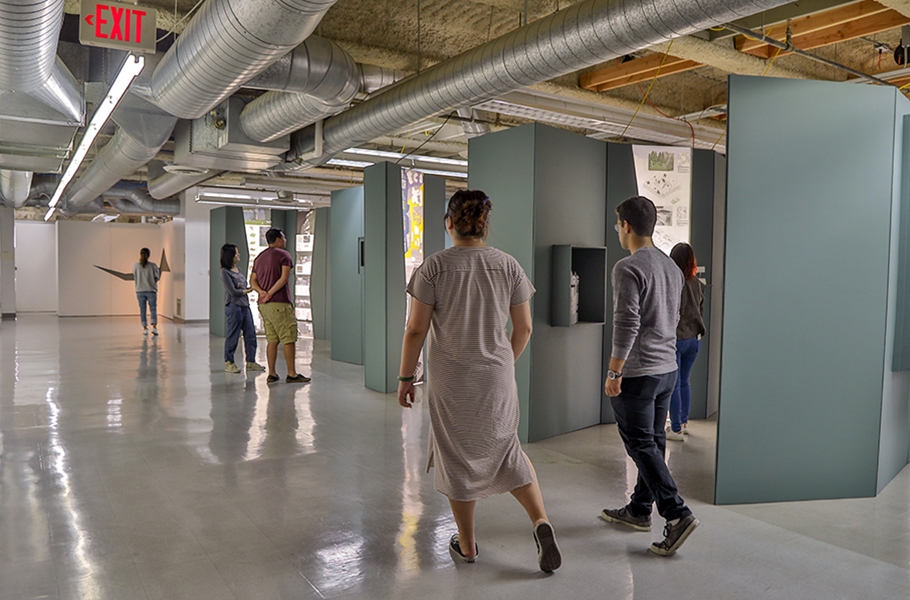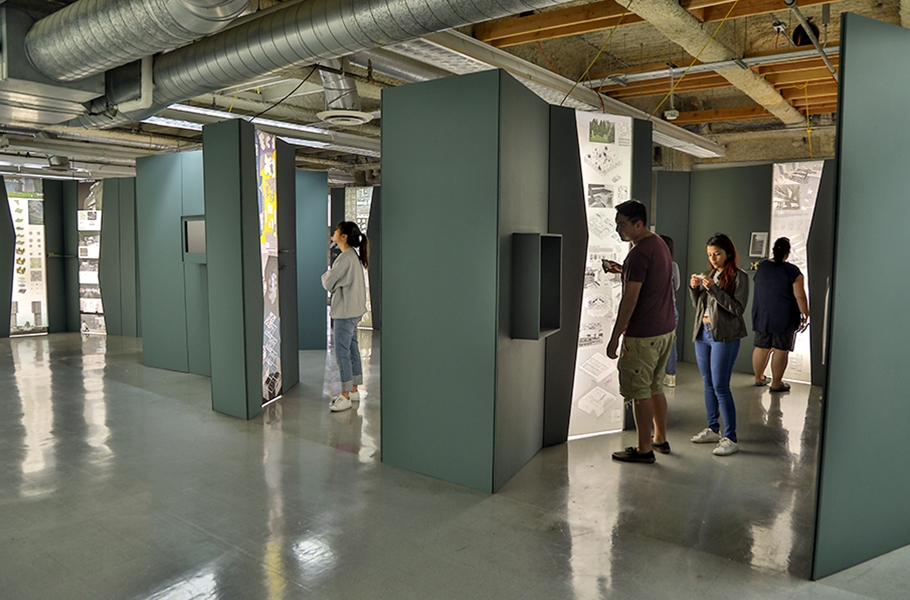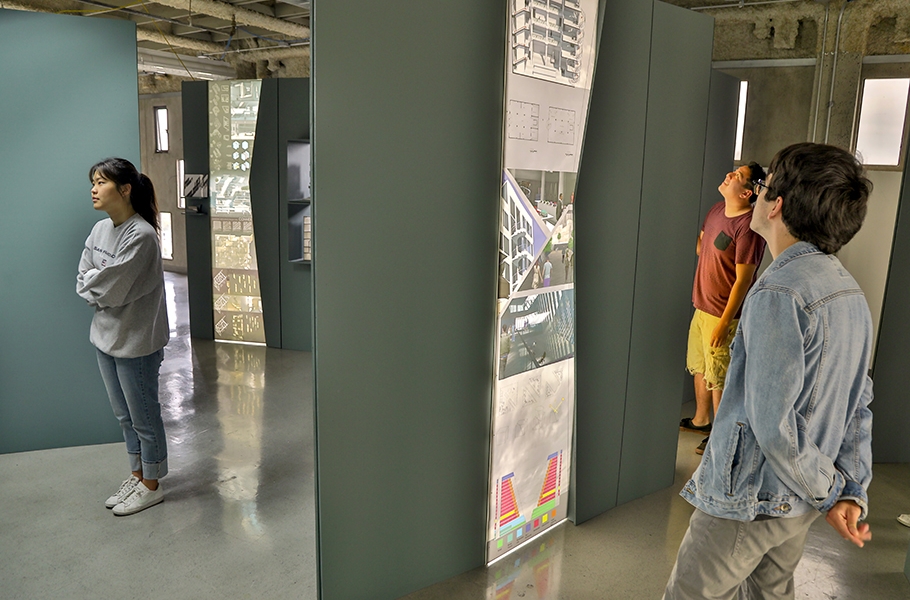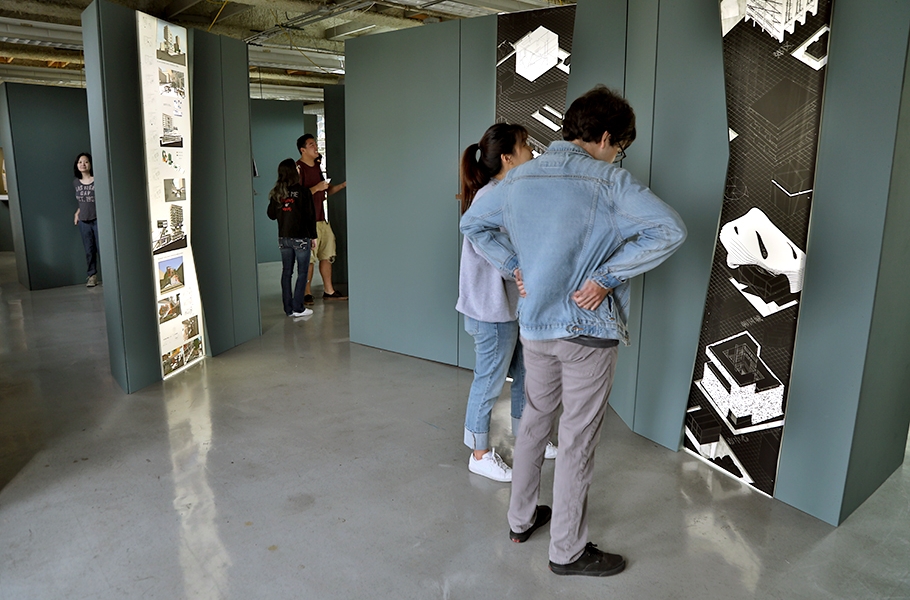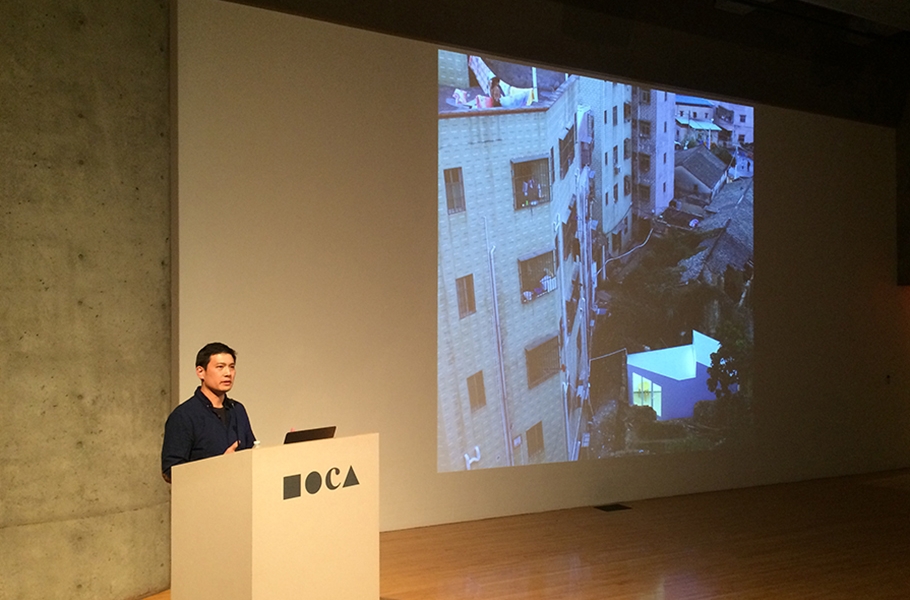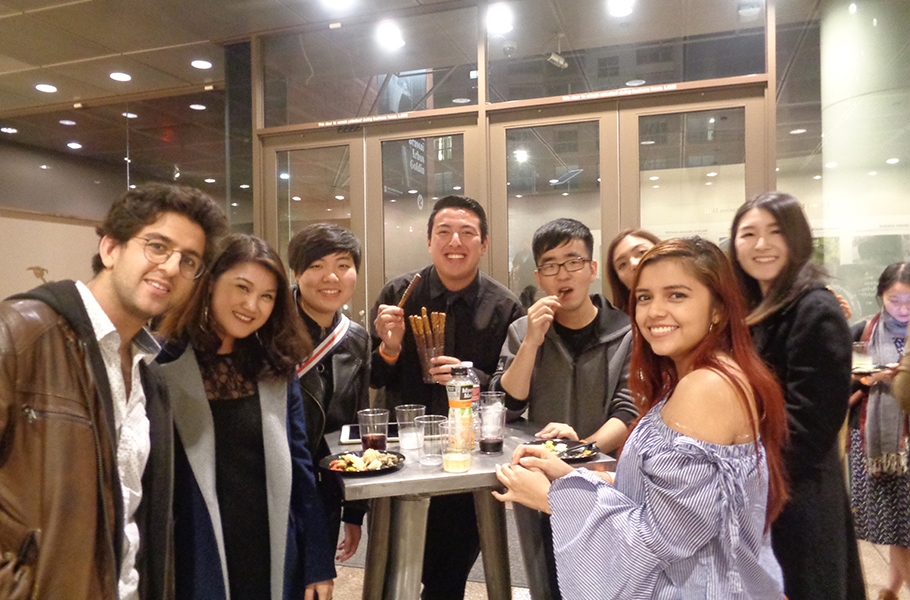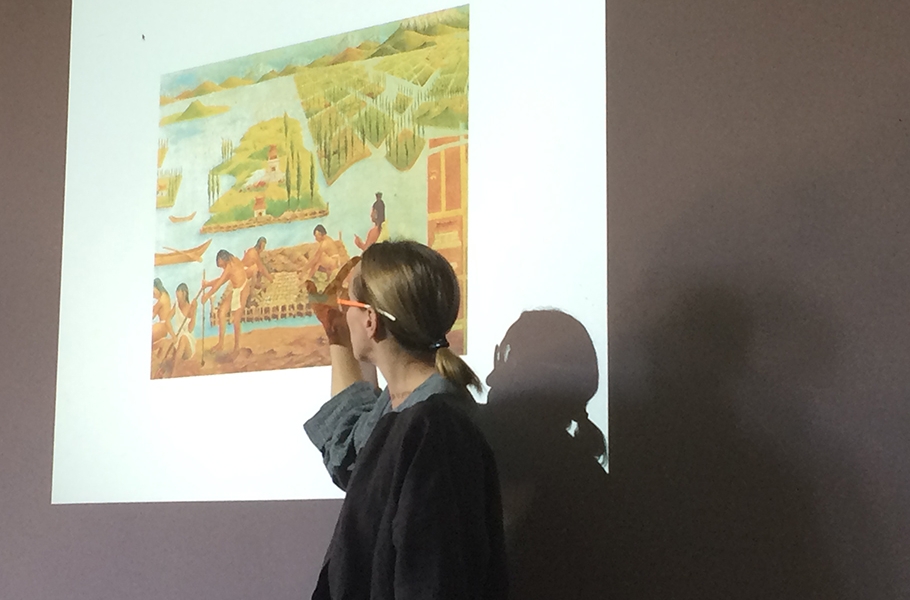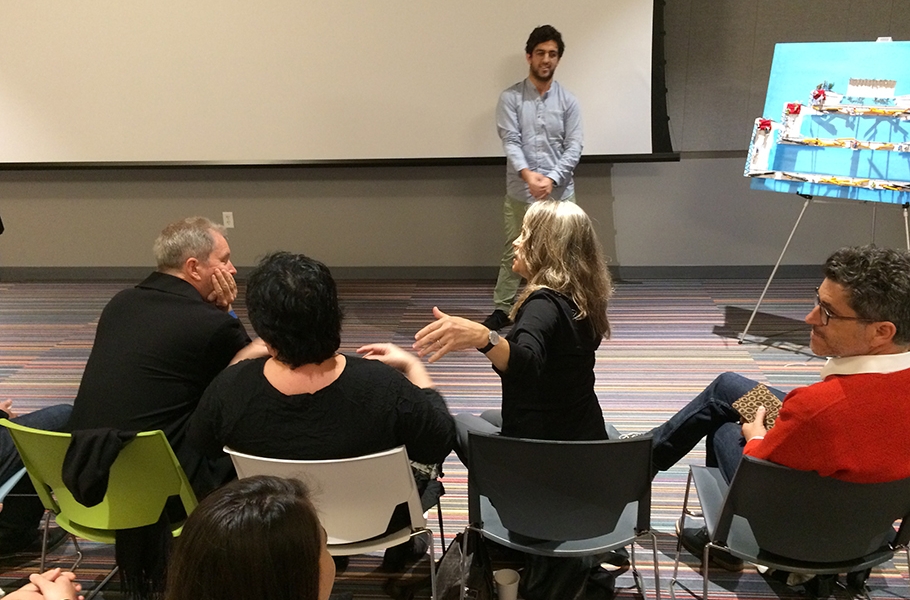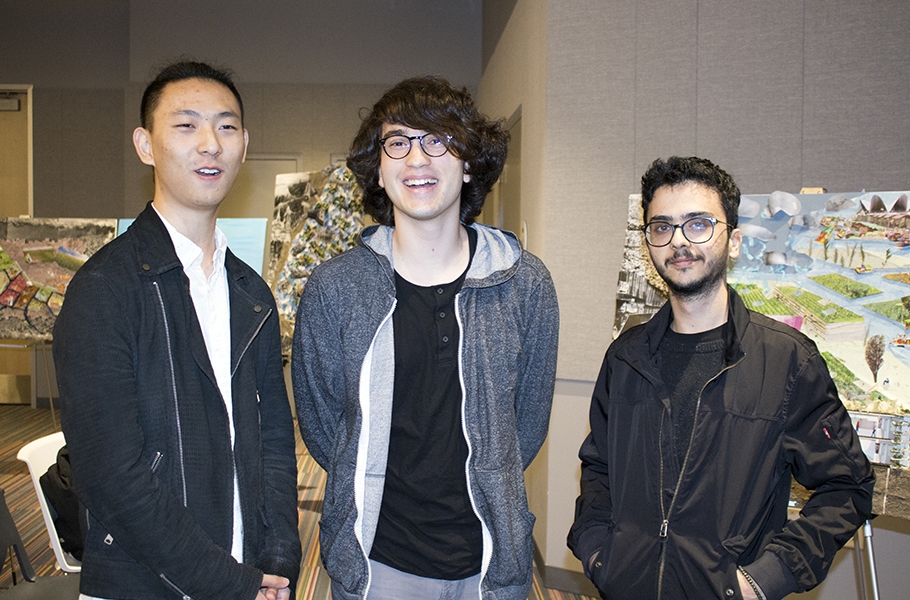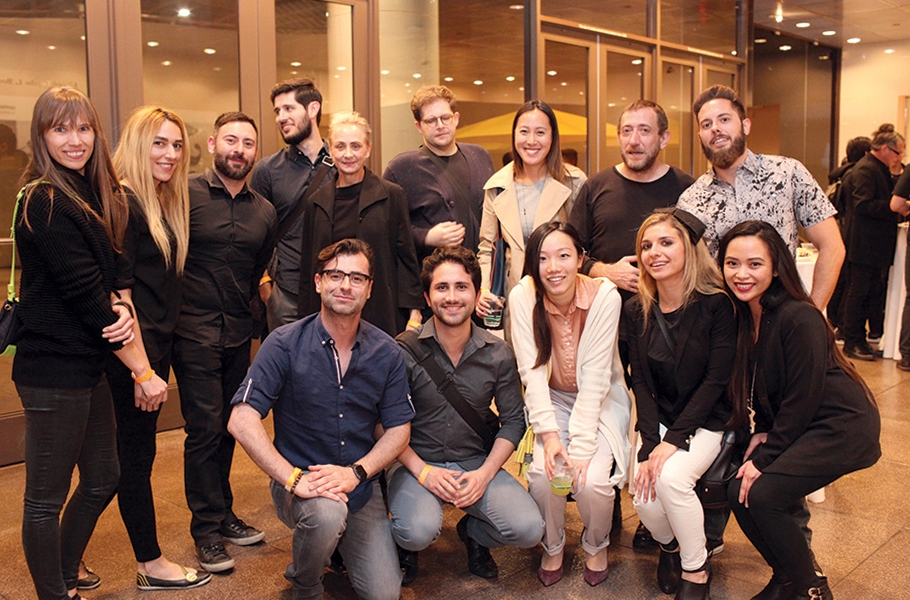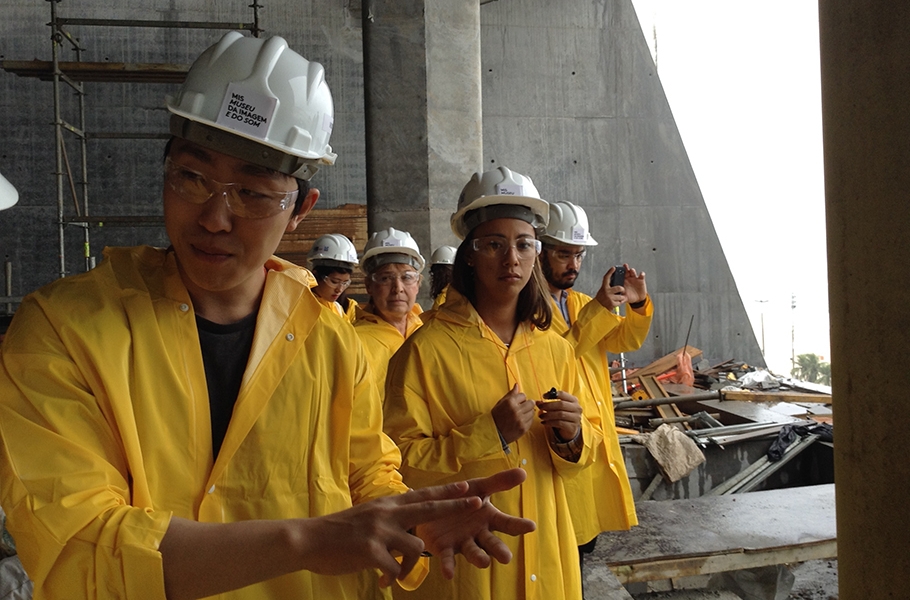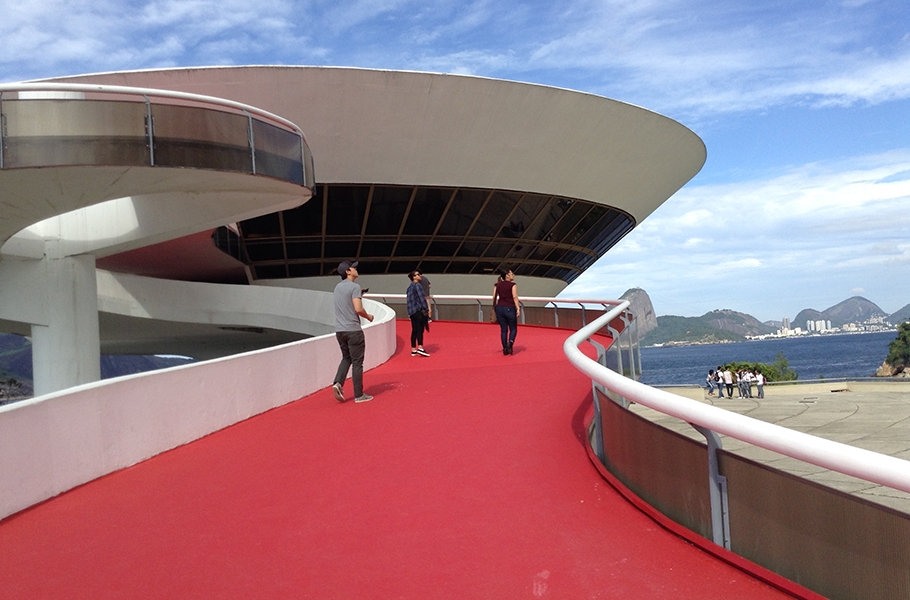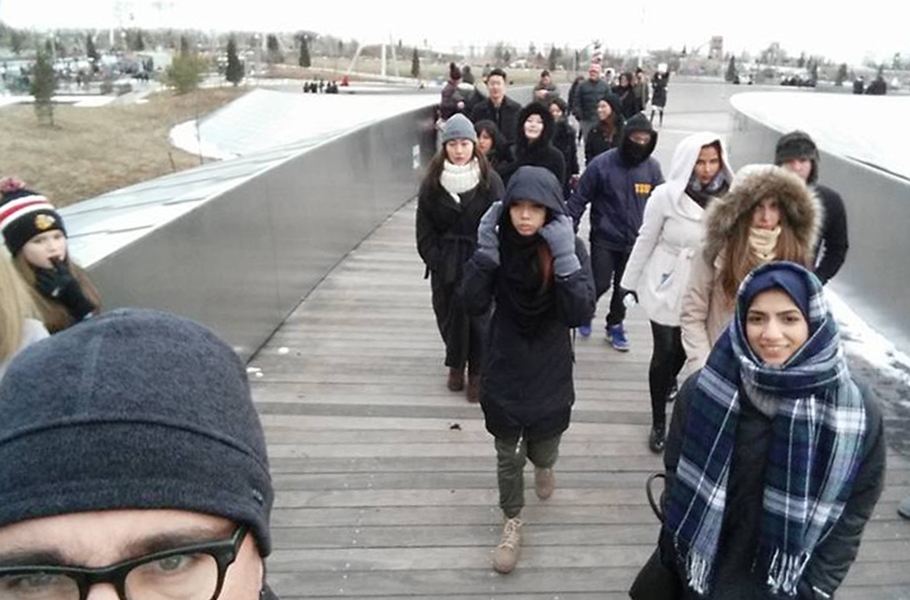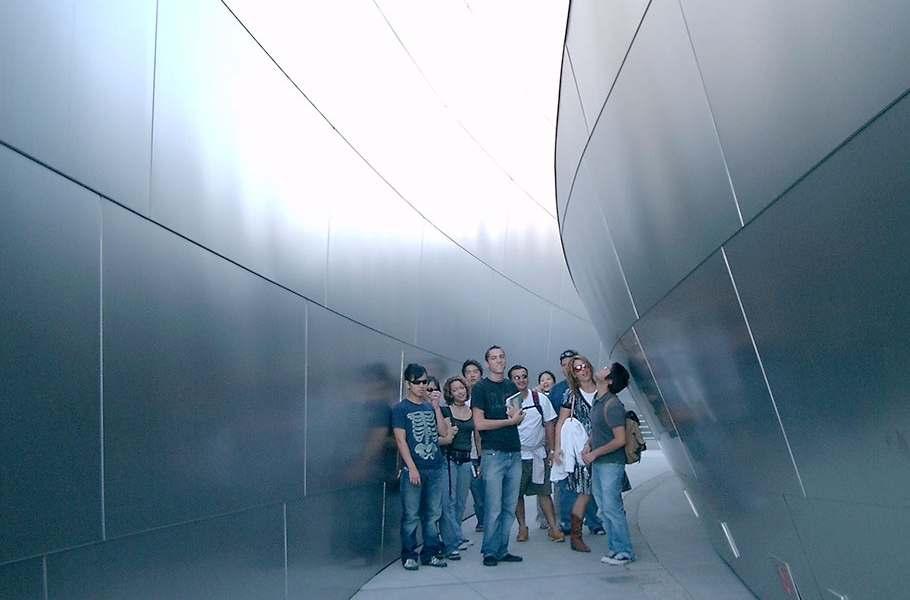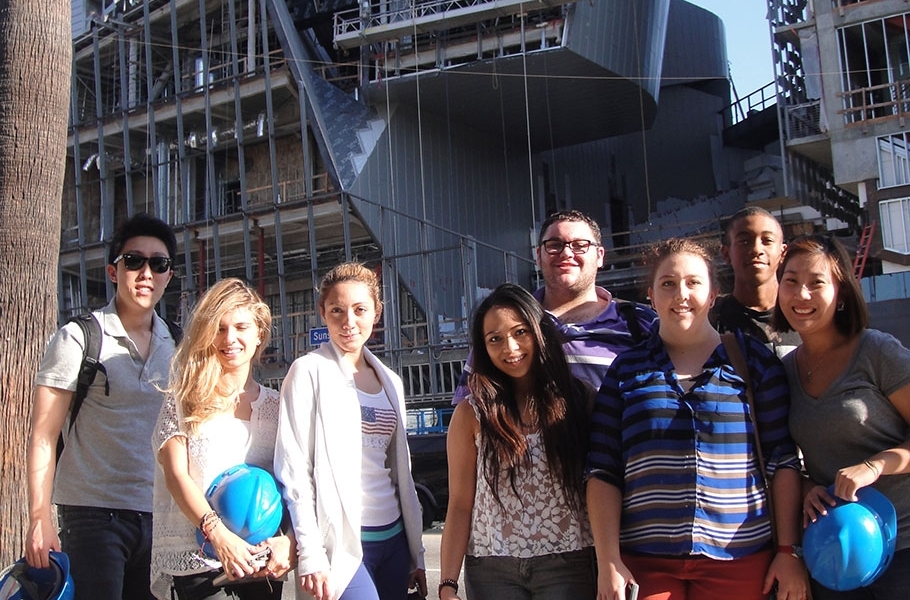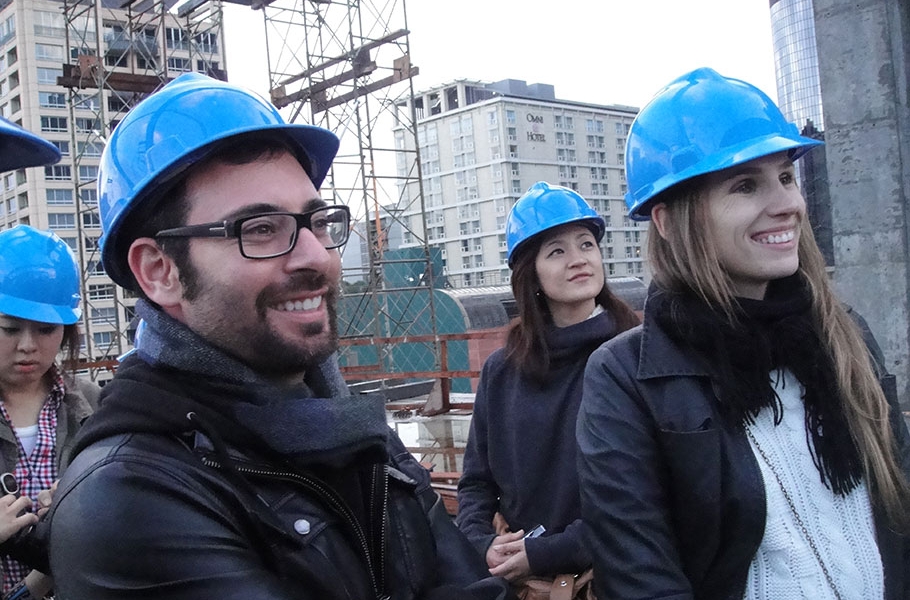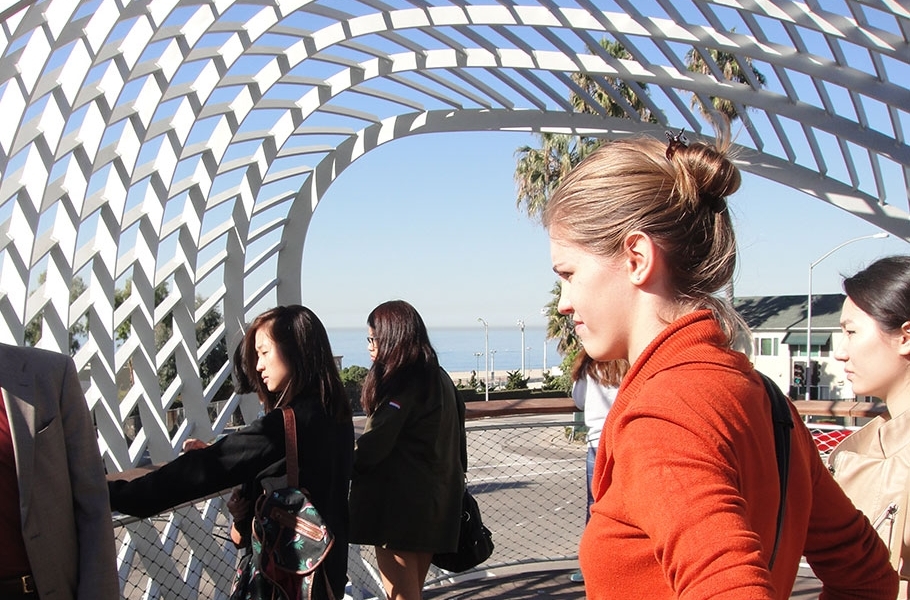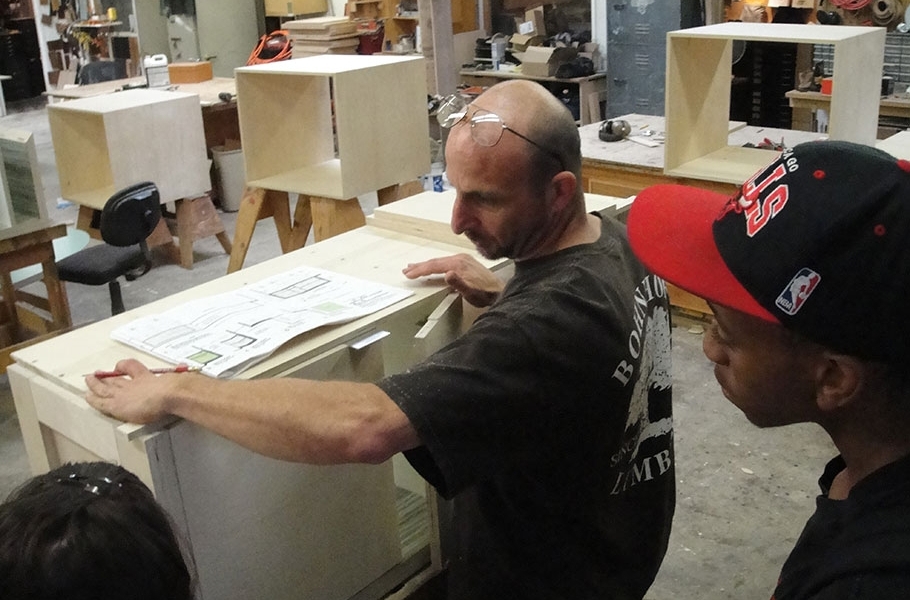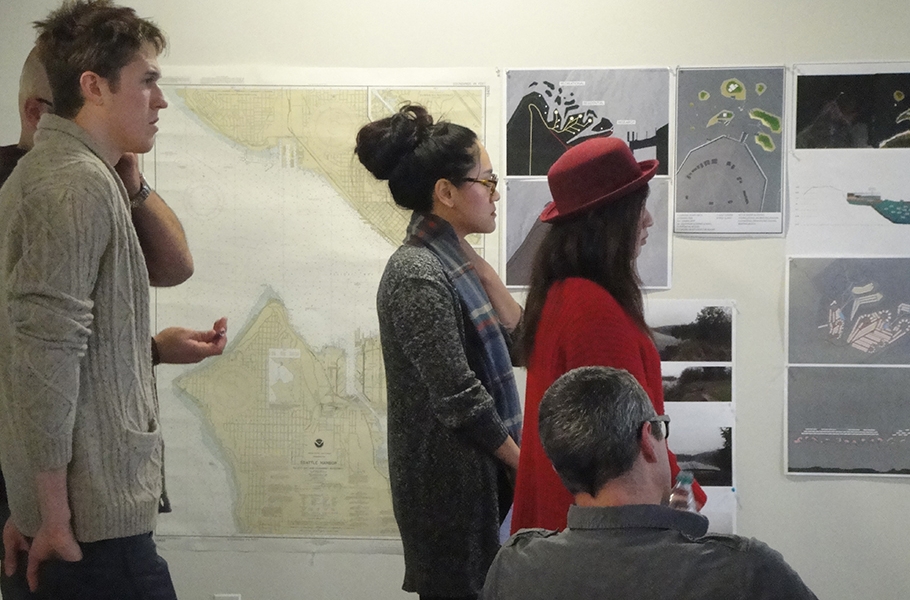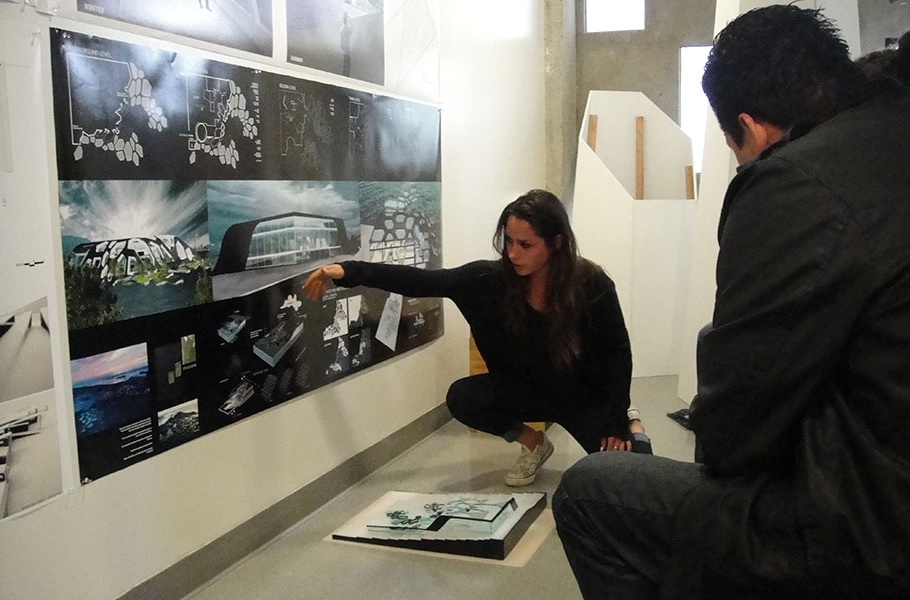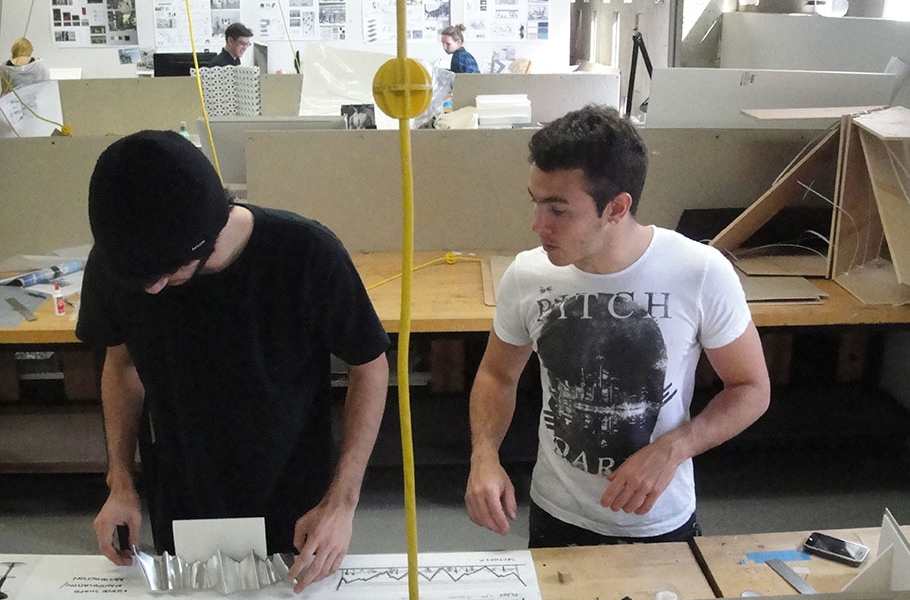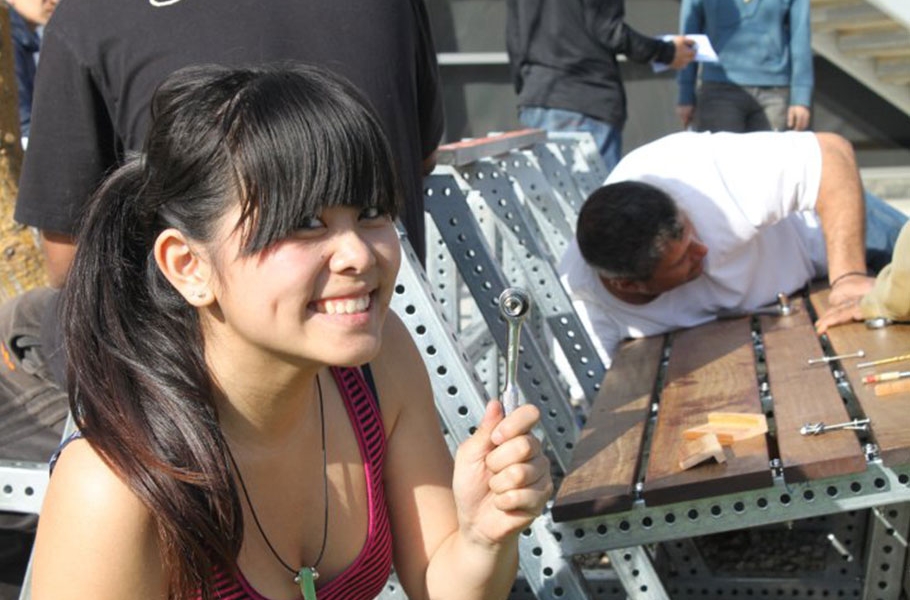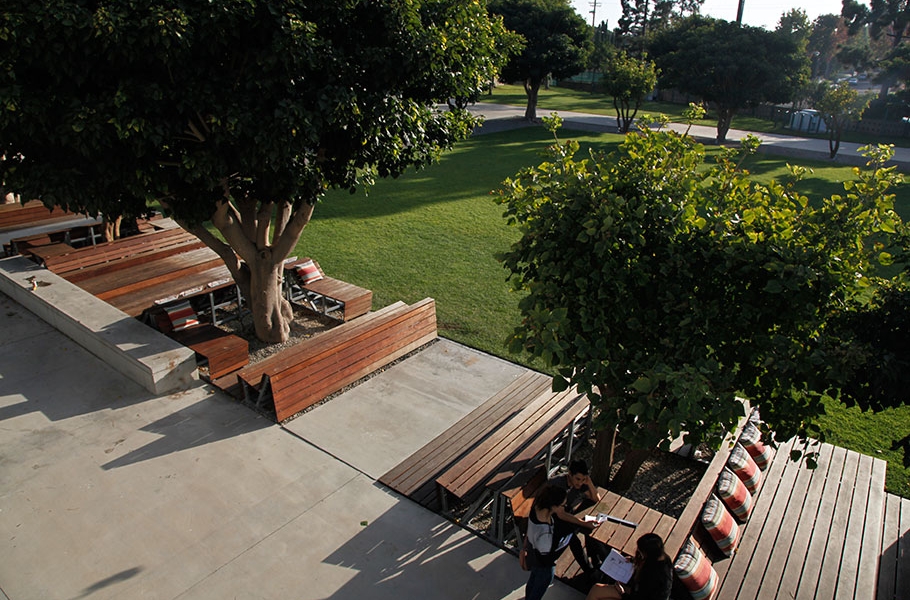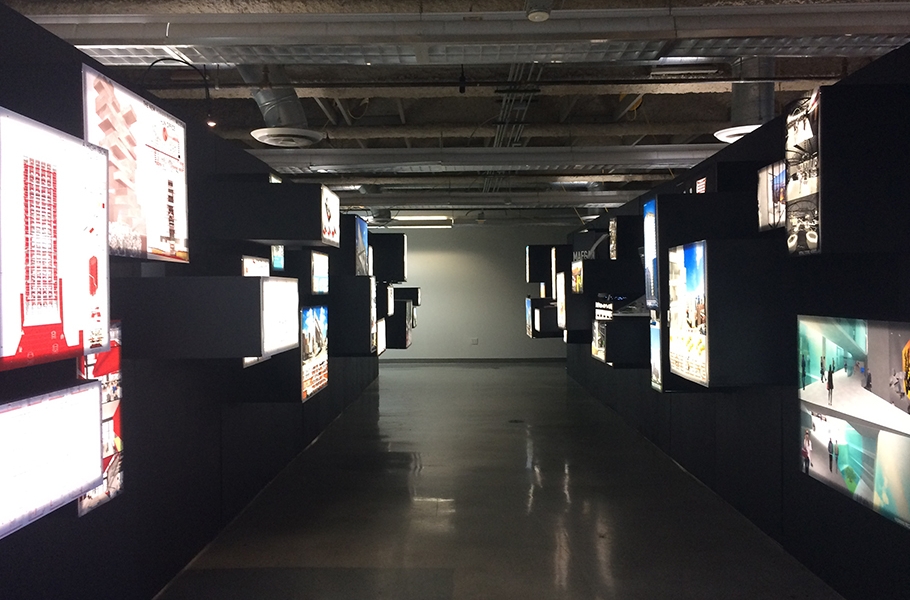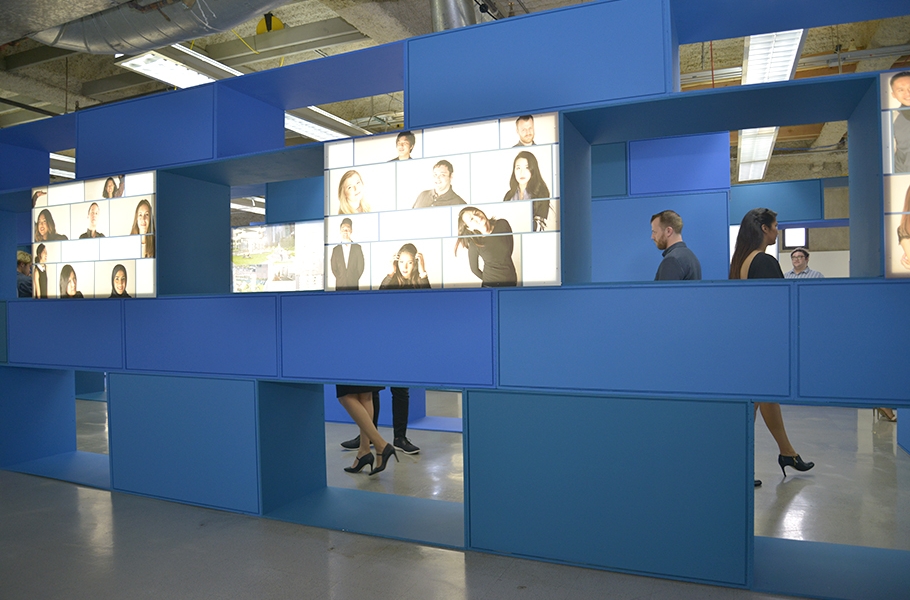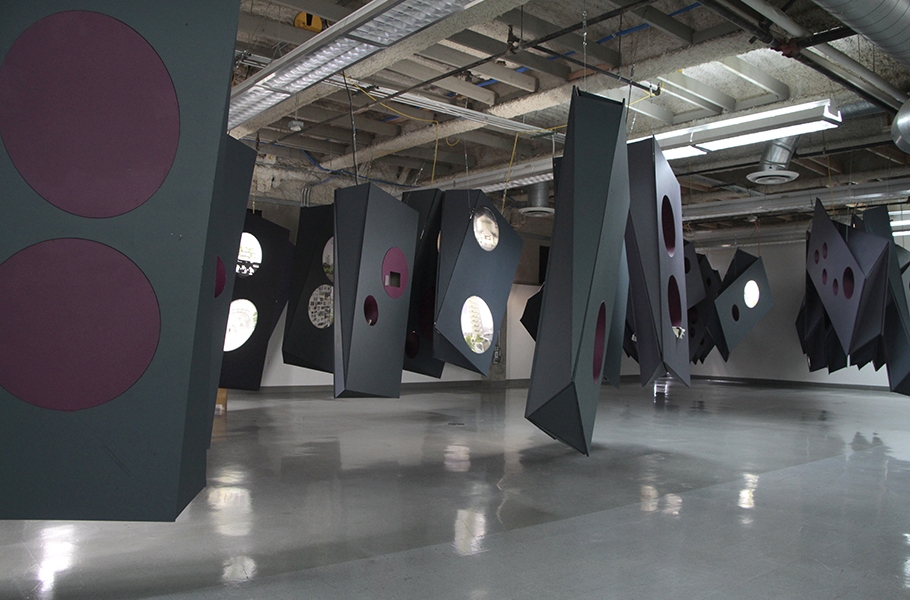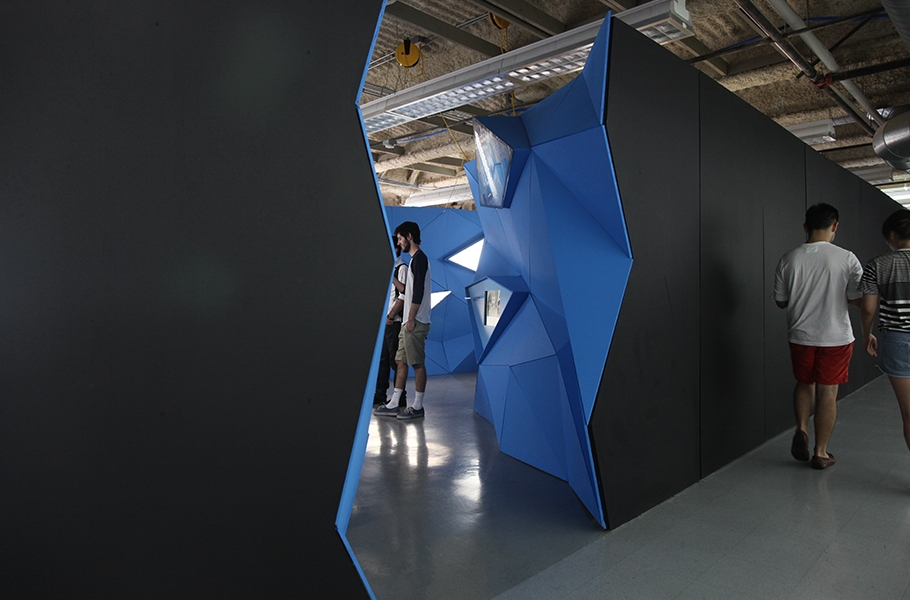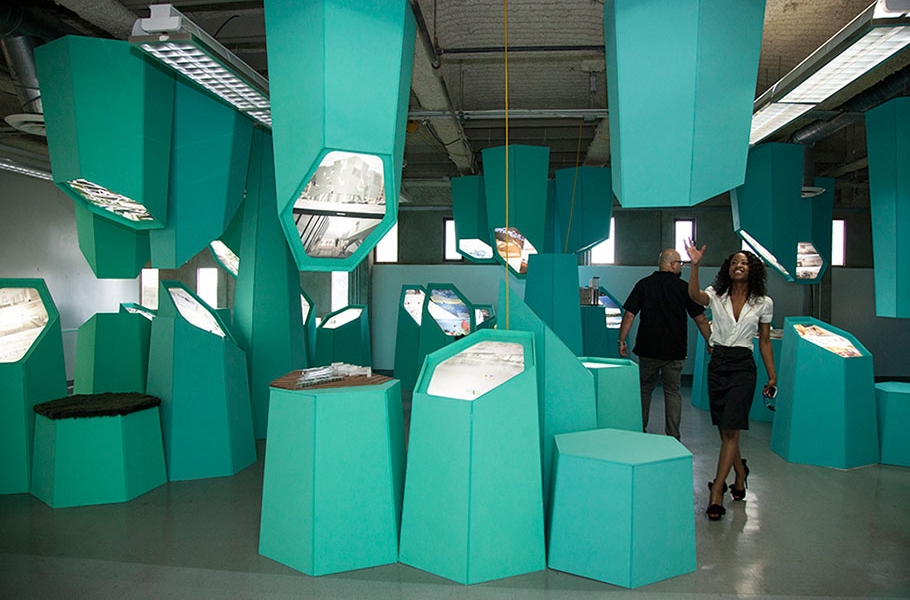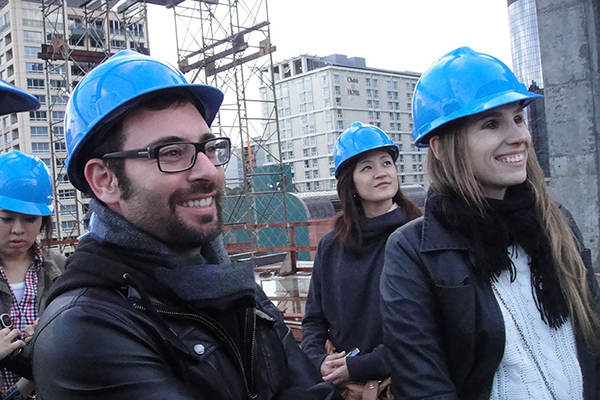Architecture (buildings), landscape (spaces between buildings), and interiors (spaces within buildings) organize and shape the contexts for everyone’s activities and relations.
Students in the multidisciplinary Environmental Design major study in one of its two Areas of Emphasis. The Architecture/Landscape/Interiors Area of Emphasis uniquely addresses all three of the department's design fields within a single, sequential curriculum. The Interiors + Furniture Area of Emphasis focuses on the full material development of interior spaces that include custom cabinetry and complementary furniture designed specifically for those spaces (not commercial production, i.e. Product Design). Both Areas of Emphasis focus on design supported by technology and theory courses, and culminate in a Bachelor of Fine Arts degree. At the core of both Areas of Emphasis are six comprehensive studios, five of which address potential real-world projects sited in Los Angeles and other cities. Support courses present the materials and methods of building, landscape, and interior construction; physical and digital communication skills and media; and the history and theory of spatial design.
In senior year, Environmental Design students travel to another U.S. city, such as New York, Chicago, or Seattle, to research the site and urban context of their final studio project. All seniors work together collaboratively to design, fabricate, assemble, and install a full-scale spatial environment as part of Otis College’s Annual Exhibition.
Environmental Design graduates work in architecture, landscape, and interiors firms as well as firms that address related fields such as exhibition, lighting, water feature, and set or production design. Our graduates have completed post-graduate degrees, such as Master of Architecture, Master of Landscape Architecture, Master of Interior Architecture, and Master of Science in Civil Engineering. Environmental Design graduates may become licensed architects through work experience and testing in California, with no additional education.
You may complete a BFA degree in two years at Otis College by transferring as a first-semester sophomore in Environmental Design's Jump-Through Pathway. Explore our various Pathways into the Environmental Design program. Environmental Design is accepting applications for sophomore and junior transfer students. Environmental Design will not be available to entering freshmen starting in fall 2023, as the program is scheduled to graduate its final class in spring 2026.
Architecture (buildings), landscape (spaces between buildings), and interiors (spaces within buildings) organize and shape the contexts for everyone's activities and relations.
Students in the multidisciplinary Environmental Design major study in one of its two Areas of Emphasis. The Architecture/Landscape/Interiors Area of Emphasis uniquely addresses all three of the department's design fields within a single, sequential curriculum. The Interiors + Furniture Area of Emphasis focuses on the full material development of interior spaces that includes custom cabinetry and complementary furniture designed specifically for those spaces (not commercial production, i.e. Product Design). Both Areas of Emphasis focus on design supported by technology and theory courses, and culminate in a Bachelor of Fine Arts degree. At the core of both Areas of Emphasis are six comprehensive studios, five of which address potential real-world projects sited in Los Angeles and other cities. Support courses present the materials and methods of building, landscape, and interior construction; physical and digital communication skills and media; and the history and theory of spatial design.
In senior year, Environmental Design students travel to another U.S. city, such as New York, Chicago, or Seattle, to research the site and urban context of their final studio project. All seniors work together collaboratively to design, fabricate, assemble, and install a full-scale spatial environment as part of Otis College's Annual Exhibition.
Environmental Design graduates work in architecture, landscape, and interiors firms as well as organizations that address related fields such as exhibition, lighting, water feature, and set or production design. Our graduates have gone on to complete post-graduate degrees, such as a Master of Architecture, Master of Landscape Architecture, Master of Interior Architecture, or Master of Science in Civil Engineering. Environmental Design graduates may become licensed architects through work experience and testing in California, with no additional education.
Environmental Design is accepting applications for sophomore and junior transfer students. Environmental Design will not be available to entering freshmen as the program is scheduled to graduate its final class in spring 2026.
Architecture/Landscape/Interiors
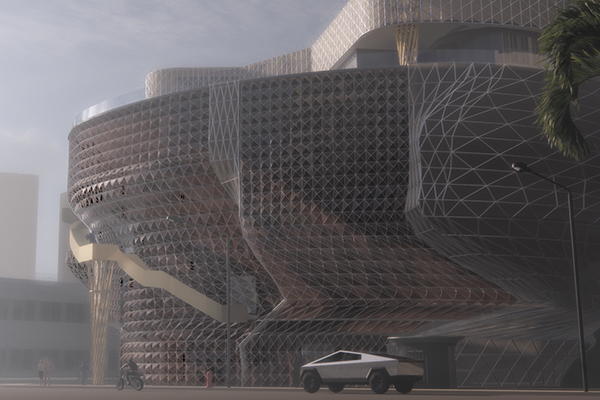
The multi-disciplinary Architecture/Landscape/Interiors curriculum is unique, unlike any other in the United States, if not the world. It provides exposure and practice in the full range of the spatial design fields.
Interiors + Furniture
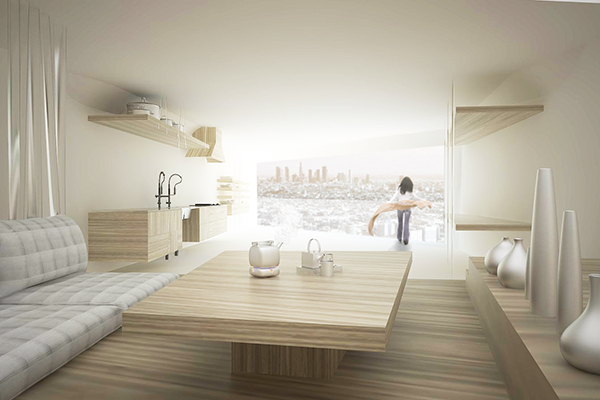
The new (as of fall 2021) Interiors + Furniture curriculum will focus on the configuration and full material development of interior spaces to the level of complementary, custom furniture, designed specifically for those spaces.
Curricula
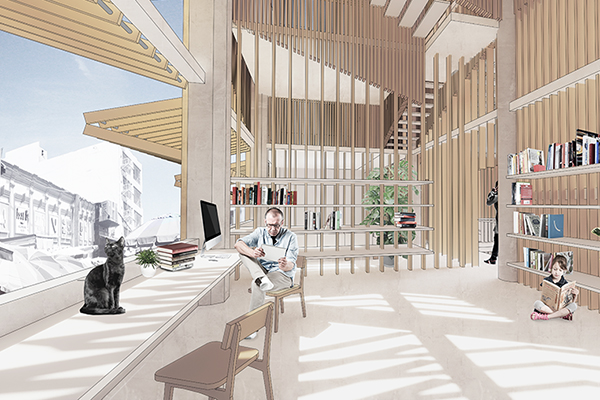
The two Environmental Design curricula provide introduction and practice in architecture, landscape, and interiors in two different ways - combined (Architecture/Landscape/Interiors) and focused (Interiors + Furniture). See our Curricula and Course Descriptions here.
Student Work and Life
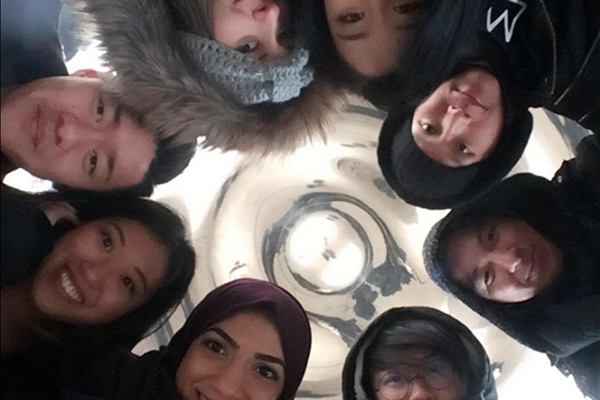
Students participate in field trips, attend lectures by visiting architects and designers, and engage in departmental, local, and national competitions. See our students’ studio projects and activities, and departmental events here.
Pathways
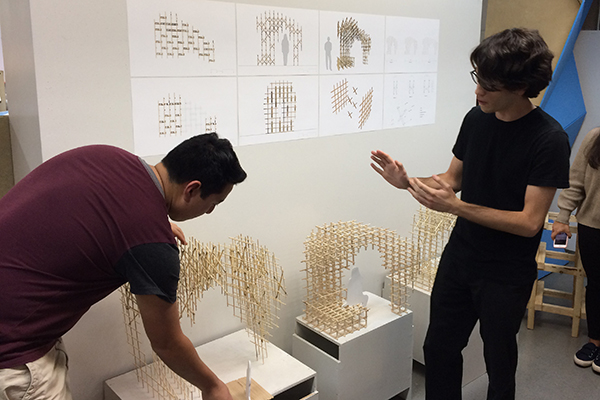
We welcome transfer students with multiple points of entry and accelerated schedules. Alumni may enter graduate programs with advanced standing. See additional information here.
Careers + Alumnx
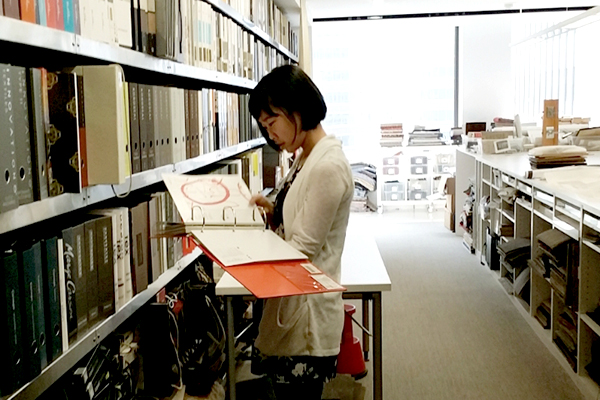
Our alumni work professionally in all three of the department’s fields as well as specialized areas of spatial design including exhibits, museums, themed and aquatic environments, entertainment design, and lighting.
Faculty
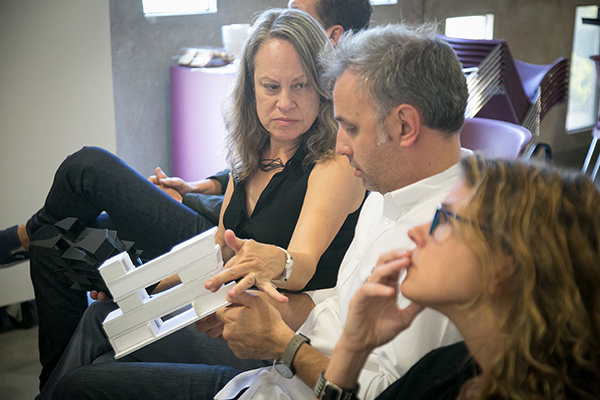
Environmental Design faculty are active professionals and leaders in the department’s three fields, as well as experienced instructors. See their professional work and biographies here.



